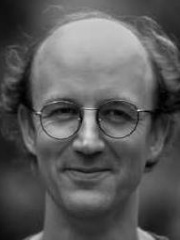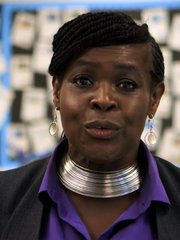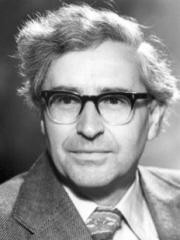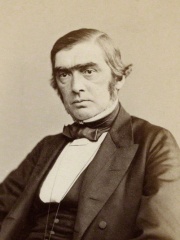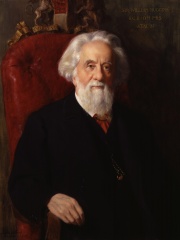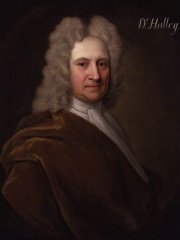
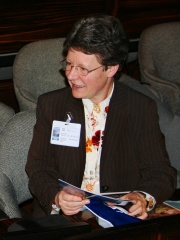
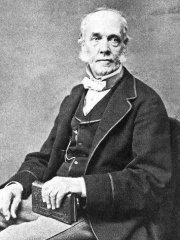
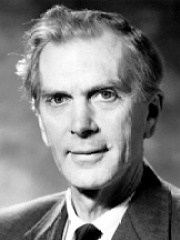
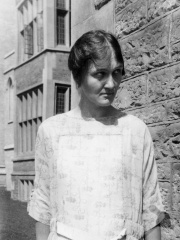

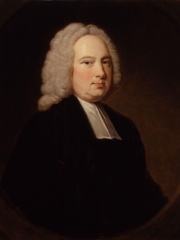
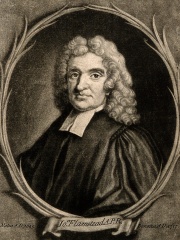
The Most Famous
ASTRONOMERS from United Kingdom
This page contains a list of the greatest British Astronomers. The pantheon dataset contains 644 Astronomers, 73 of which were born in United Kingdom. This makes United Kingdom the birth place of the 3rd most number of Astronomers behind United States, and Germany.
Top 10
The following people are considered by Pantheon to be the top 10 most legendary British Astronomers of all time. This list of famous British Astronomers is sorted by HPI (Historical Popularity Index), a metric that aggregates information on a biography's online popularity. Visit the rankings page to view the entire list of British Astronomers.

1. Edmond Halley (1656 - 1742)
With an HPI of 85.55, Edmond Halley is the most famous British Astronomer. His biography has been translated into 90 different languages on wikipedia.
Edmond (or Edmund) Halley (; 8 November [O.S. 29 October] 1656 – 25 January 1742 [O.S. 14 January 1741]) was an English astronomer, mathematician and physicist. He was the second Astronomer Royal in Britain, succeeding John Flamsteed in 1720. From an observatory he constructed on Saint Helena in 1676–77, Halley catalogued the southern celestial hemisphere and recorded a transit of Mercury across the Sun. He realised that a similar transit of Venus could be used to determine the distances between Earth, Venus, and the Sun. Upon his return to England, he was made a fellow of the Royal Society, and with the help of King Charles II, was granted a master's degree from Oxford. Halley encouraged and helped fund the publication of Isaac Newton's influential Philosophiæ Naturalis Principia Mathematica (1687). From observations Halley made in September 1682, he used Newton's law of universal gravitation to compute the periodicity of Halley's Comet in his 1705 Synopsis of the Astronomy of Comets. It was named after him upon its predicted return in 1758, which he did not live to see. Beginning in 1698, Halley made sailing expeditions and made observations on the conditions of terrestrial magnetism. In 1718, he discovered the proper motion of the "fixed stars".

2. Jocelyn Bell Burnell (b. 1943)
With an HPI of 75.09, Jocelyn Bell Burnell is the 2nd most famous British Astronomer. Her biography has been translated into 58 different languages.
Dame Susan Jocelyn Bell Burnell (; née Bell; born 15 July 1943) is a Northern Irish physicist who, while conducting research for her doctorate, discovered the first radio pulsars in 1967. This discovery later earned the Nobel Prize in Physics in 1974, but she was not among the awardees. Bell Burnell was president of the Royal Astronomical Society from 2002 to 2004, president of the Institute of Physics from October 2008 until October 2010, and interim president of the Institute following the death of her successor, Marshall Stoneham, in early 2011. She was Chancellor of the University of Dundee from 2018 to 2023. In 2018, she was awarded the Special Breakthrough Prize in Fundamental Physics. Following the announcement of the award, she decided to use the $3 million (£2.3 million) prize money to establish a fund to help female, minority and refugee students to become research physicists. The fund is administered by the Institute of Physics. In 2021, Bell Burnell became the second female recipient (after Dorothy Hodgkin in 1976) of the Copley Medal. In 2025, Bell Burnell's image was included on an An Post stamp celebrating women in STEM.

3. William Lassell (1799 - 1880)
With an HPI of 73.45, William Lassell is the 3rd most famous British Astronomer. His biography has been translated into 58 different languages.
William Lassell (18 June 1799 – 5 October 1880) was an English merchant and astronomer. He is remembered for his improvements to the reflecting telescope and his ensuing discoveries of four planetary satellites.

4. Martin Ryle (1918 - 1984)
With an HPI of 72.20, Martin Ryle is the 4th most famous British Astronomer. His biography has been translated into 73 different languages.
Sir Martin Ryle (27 September 1918 – 14 October 1984) was an English radio astronomer who developed revolutionary radio telescope systems (see e.g. aperture synthesis) and used them for accurate location and imaging of weak radio sources. In 1946 Ryle and Derek Vonberg were the first people to publish interferometric astronomical measurements at radio wavelengths. With improved equipment, Ryle observed the most distant known galaxies in the universe at that time. He was the first Professor of Radio Astronomy in the University of Cambridge and founding director of the Mullard Radio Astronomy Observatory. He was the twelfth Astronomer Royal from 1972 to 1982. Ryle and Antony Hewish shared the Nobel Prize for Physics in 1974, the first Nobel prize awarded in recognition of astronomical research. In the 1970s, Ryle turned the greater part of his attention from astronomy to social and political issues which he considered to be more urgent. He was also an enthusiastic amateur radio operator (callsign G3CY).
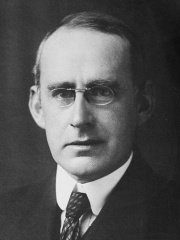
5. Arthur Eddington (1882 - 1944)
With an HPI of 71.99, Arthur Eddington is the 5th most famous British Astronomer. His biography has been translated into 60 different languages.
Sir Arthur Stanley Eddington, (28 December 1882 – 22 November 1944) was an English astronomer, physicist, and mathematician. He was also a philosopher of science and a populariser of science. The Eddington limit, the natural limit to the luminosity of stars, or the radiation generated by accretion onto a compact object, is named in his honour. Around 1920, he foreshadowed the discovery and mechanism of nuclear fusion processes in stars, in his paper "The Internal Constitution of the Stars". At that time, the source of stellar energy was a complete mystery; Eddington was the first to correctly speculate that the source was fusion of hydrogen into helium. Eddington wrote a number of articles that announced and explained Einstein's theory of general relativity to the English-speaking world. World War I had severed many lines of scientific communication, and new developments in German science were not well known in England. He also conducted an expedition to observe the solar eclipse of 29 May 1919 on the Island of Príncipe that provided one of the earliest confirmations of general relativity, and he became known for his popular expositions and interpretations of the theory.

6. Cecilia Payne-Gaposchkin (1900 - 1979)
With an HPI of 71.96, Cecilia Payne-Gaposchkin is the 6th most famous British Astronomer. Her biography has been translated into 55 different languages.
Cecilia Payne-Gaposchkin (born Cecilia Helena Payne; (1900-05-10)May 10, 1900 – (1979-12-07)December 7, 1979) was a British-born American astronomer and astrophysicist. Her work on the cosmic makeup of the universe and the nature of variable stars was foundational to modern astrophysics. She determined that stars were composed primarily of hydrogen and helium in her 1925 doctoral thesis. Her groundbreaking conclusion was initially rejected by leading astrophysicists, including Henry Norris Russell, because it contradicted the science of the time, which held that no significant elemental differences distinguished the Sun and Earth. Independent observations eventually proved that she was correct. Despite completing her studies, because she was a woman Payne was not eligible to receive a degree from the University of Cambridge. Similarly in America, she was not eligible to receive a doctoral degree (PhD) for her studies at Harvard University, as they did not grant doctoral degrees to women at the time, instead, she received her doctoral degree from Radcliffe College – a liberal arts college for women that began as a study program for women within Harvard. She would go on to overcome barriers for women that she encountered in science and her success opened the door for countless women astronomers, including her Harvard colleague, Helen Sawyer Hogg. While she was a student at Cambridge, Payne was elected to the Royal Astronomical Society. Later, she became the first recipient of the American Astronomical Society’s prestigious Annie Jump Cannon Award in Astronomy. In 1956, she was the first woman appointed as a professor and as a department chair at Harvard. Her work resulted in several published books, including The Stars of High Luminosity (1930), Variable Stars (1938), and Variable Stars and Galactic Structure (1954).

7. John Michell (1724 - 1793)
With an HPI of 71.93, John Michell is the 7th most famous British Astronomer. His biography has been translated into 31 different languages.
John Michell (; 25 December 1724 – 21 April 1793) was an English natural philosopher and clergyman who provided pioneering insights into a wide range of scientific fields including astronomy, geology, optics, and gravitation. He was the first to have proposed the existence of stellar bodies comparable to black holes, and was the first to apply statistics to astronomy, providing the earliest evidence for the physical nature of double stars and star clusters. He was first to have suggested that earthquakes travelled in (seismic) waves and the first to have measured the velocity of an earthquake, that being the 1755 Lisbon earthquake. Michell further invented an apparatus to measure the mass of the Earth that was later used by Henry Cavendish to measure the gravitational constant. He also explained how to manufacture an artificial magnet and provided the first accurate and comprehensive statement of the law of magnetic force. As a result, he has been called the father of both seismology and of magnetometry. Michell served as the Woodwardian Professor of Geology at the University of Cambridge starting in 1762. He was elected a Fellow of the Royal Society in 1760.

8. James Bradley (1693 - 1762)
With an HPI of 71.24, James Bradley is the 8th most famous British Astronomer. His biography has been translated into 46 different languages.
James Bradley (September 1692 – 13 July 1762) was an English astronomer and priest who served as the third Astronomer Royal from 1742. He is best known for two fundamental discoveries in astronomy, the aberration of light (1725–1728), and the nutation of the Earth's axis (1728–1748). These two discoveries were called "the most brilliant and useful of the century" by Jean Baptiste Joseph Delambre, historian of astronomy, mathematical astronomer and director of the Paris Observatory. In his History of astronomy in the 18th century (1821), Delambre stated:"It is to these two discoveries by Bradley that we owe the exactness of modern astronomy. ... This double service assures to their discoverer the most distinguished place (after Hipparchus and Kepler) above the greatest astronomers of all ages and all countries."

9. John Flamsteed (1646 - 1719)
With an HPI of 70.98, John Flamsteed is the 9th most famous British Astronomer. His biography has been translated into 53 different languages.
John Flamsteed (19 August 1646 – 31 December 1719) was an English astronomer and the first Astronomer Royal. His main achievements were the preparation of a 3,000-star catalogue, Catalogus Britannicus, and a star atlas called Atlas Coelestis, both published posthumously. He also made the first recorded observations of Uranus, although he mistakenly catalogued it as a star, and he laid the foundation stone for the Royal Greenwich Observatory.
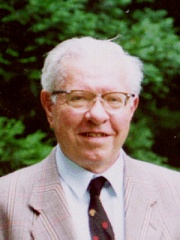
10. Fred Hoyle (1915 - 2001)
With an HPI of 70.98, Fred Hoyle is the 10th most famous British Astronomer. His biography has been translated into 60 different languages.
Sir Fred Hoyle (24 June 1915 – 20 August 2001) was an English astronomer who formulated the theory of stellar nucleosynthesis and was one of the authors of the influential B2FH paper. He held controversial views on some scientific matters — in particular, in his rejection of the "Big Bang" theory (a term he allegedly jokingly coined on BBC Radio but later denied doing so in derision) in favour of a "steady-state model", and his promotion of panspermia as the origin of life on Earth. He spent most of his working life at St John's College, Cambridge, and served as the founding director of the Institute of Theoretical Astronomy at Cambridge. Hoyle also wrote science fiction novels, short stories, and radio plays, co-created television serials, and co-authored twelve books with his son, Geoffrey Hoyle.
People
Pantheon has 73 people classified as British astronomers born between 1075 and 1968. Of these 73, 5 (6.85%) of them are still alive today. The most famous living British astronomers include Jocelyn Bell Burnell, David C. Jewitt, and Robert H. McNaught. The most famous deceased British astronomers include Edmond Halley, William Lassell, and Martin Ryle. As of April 2024, 2 new British astronomers have been added to Pantheon including David J. Asher, and Maggie Aderin-Pocock.
Living British Astronomers
Go to all RankingsJocelyn Bell Burnell
1943 - Present
HPI: 75.09
David C. Jewitt
1958 - Present
HPI: 58.55
Robert H. McNaught
1956 - Present
HPI: 55.49
David J. Asher
1966 - Present
HPI: 44.15
Maggie Aderin-Pocock
1968 - Present
HPI: 33.11
Deceased British Astronomers
Go to all RankingsEdmond Halley
1656 - 1742
HPI: 85.55
William Lassell
1799 - 1880
HPI: 73.45
Martin Ryle
1918 - 1984
HPI: 72.20
Arthur Eddington
1882 - 1944
HPI: 71.99
Cecilia Payne-Gaposchkin
1900 - 1979
HPI: 71.96
John Michell
1724 - 1793
HPI: 71.93
James Bradley
1693 - 1762
HPI: 71.24
John Flamsteed
1646 - 1719
HPI: 70.98
Fred Hoyle
1915 - 2001
HPI: 70.98
Antony Hewish
1924 - 2021
HPI: 69.91
John Russell Hind
1823 - 1895
HPI: 69.77
William Huggins
1824 - 1910
HPI: 68.29
Newly Added British Astronomers (2025)
Go to all RankingsOverlapping Lives
Which Astronomers were alive at the same time? This visualization shows the lifespans of the 25 most globally memorable Astronomers since 1700.

